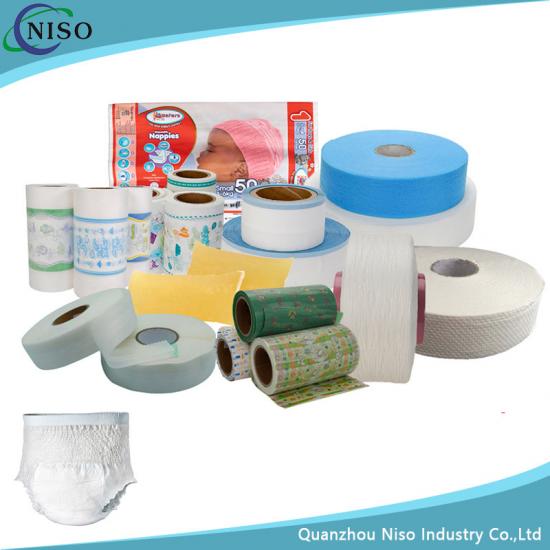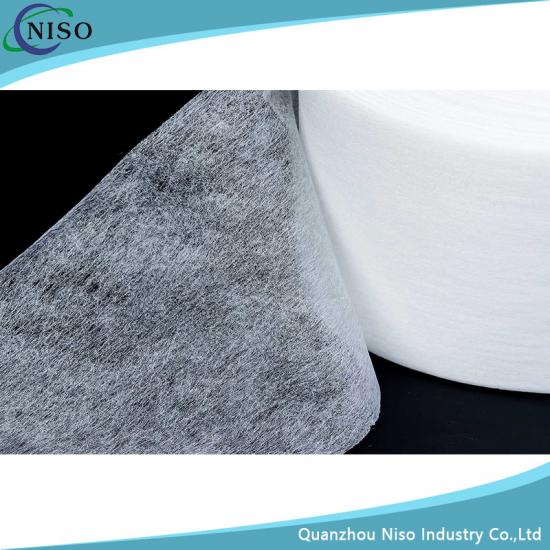Please refer to our companion article on diaper materials titled, What Is Inside Those Disposable Diapers? for the inside skinny on what makes a diaper a diaper.
For those trying to decide whether to go with cloth or disposables, you may want to check our article, Cloth Diapers vs. Disposables: How and what to choose which attempts to take on this question in an objective, fact-based, manner.
In the Beginning
- First, consider your infant's needs as well your priorities. Every family has their own bottom line. Is it cost? Health? The environment? The perfect fit? Or do you just want it all?
- Second, don't buy in bulk until you are satisfied with a specific diaper's performance and fit.
- Third, wait to buy baby's first diapers until just before or after he/she is born and you know their weight. A few packages of newborn diapers (up to 10 lb) may be all you need before heading onto size 1 (8-14 lb).Ordering diapers online is a breeze and typically they can arrive at your doorstep before you even get home from the hospital.
- Important tip: European brands, like Nature Babycare, have their own sizing systems.
- Last, cost per diaper will be best once you are ready to buy in bulk. The prices listed for each brand in our Best Disposable Diaper Review comparison chart reflect bulk prices.

Diapers are constructed in three layers, an inner layer that sits against baby's skin is designed to be soft, stay relatively dry, and wick away moisture into the core. The absorbent core is designed to pull moisture in and trap it to keep wetness away from baby to avoid rashes. The outer layer is waterproof to prevent leaks.
Credit: BabyGearLab Staff
Choose a Diaper that Exceeds in Absorbency
Absorbency is the most important trait of any diaper, disposable or cloth. Absorption covers how much liquid a diaper can hold, how well that liquid wicks away from baby and distributes throughout the diaper's core, and how well it continues to hold that moisture away from baby's skin. Poor absorption can expose baby's skin to persistent dampness, which can lead to diaper rash. Our absorption tests gave us some interesting insights into how each of the 24 disposable diapers we tested compared to one another both in absorption and overall function. In our testing, the two diapers that claimed the highest absorbency scores also claimed the highest overall scores: BAMBO Nature (our Editors' Choice) and Nature Babycare recieved a 9 and 10 out of 10 respectfully.

SAP is claimed to absorb up to 300x its weight in water and retain it. In the left photo, you see a small pile of white SAP crystals from a diaper's absorbent core. It has a consistency of a very fine white sand. We then added 65 drops of water, which was completely absorbed by the SAP in a few minutes to become the gelatinous crystal pile you see from two angles in the center and right photos.
Credit: BabyGearLab Staff
Super Absorbent Polymer (SAP)
Please allow us to delve briefly into how diapers are constructed. In order to asses diapers fairly, it is important that we discuss exactly what they are made of. We want to make sure everyone is aware of the secret chemical ingredient that is used in almost every brand of disposable diaper. Whether a diaper is green or traditional, the absorbent core of the diaper contains SAP: Super Absorbent Polymer.

This photo shows the same brand diaper (Bambo), cut in half to reveal the absorbent core, when dry (top) and when wet after an overnight wetting (below). The top layer of the wet diaper feels dry to the touch, owing to the urine being effectively absorbed into the core. SAP crystals do the heavy lifting, and are sandwiched between the upper and lower layers of the diaper core material.
Credit: BabyGearLab Staff
Find a Good Fit to Help Avoid Leaks
Diapers are sized by the weight of your baby. However, much like baby's clothes, fit between disposable diaper brands vary. Most diapers help ensure a leak-free fit by providing a double elastic sealing edge; one edge just along the absorbent core, and one along the outer shell of the diaper.
Every Baby is Unique
Of course every baby has different proportions, so finding a disposable diaper with the perfect fit can involve some trial and error. Let's face it, even the best absorbing diaper may leak if the fit is not right. Parents may need to try a handful of brands to find the diaper that fits their baby best. Again, try to avoid buying in bulk until you find your "go-to" diaper, and remember to pay attention to the weight range so you know you are buying the right size.
Baby's Comfort
For the Eco-Health Minded
Save the Earth
Much debate surrounds which is more earth-friendly: green disposable diapers or cloth diapers. Some brands of disposable diapers are manufactured with attention to minimizing their carbon footprint. However, they end up in the landfill where even compostable diapers will fail to biodegrade if in a dark, airless environment. Alternatively, cloth diapers require lots of precious water and electricity to clean over and over. Nonetheless, if you and your family do not want to commit to cloth diapering, but still want to make an effort toward being eco-conscious, more green diapers exist than ever before. These options may include chlorine-free processing, use of renewable resources, boast minimal packaging, use biodegradable materials, and often contribute to charities in an attempt to offset their footprint. But, in our analysis comparing cloth vs. disposable diapers we concluded that cloth is a much better option for the eco-health minded parent (and also for the budget minded parent too).
One thing we can assure you of, is that you don't need to sacrifice quality to be more Earth friendly. In our tests of disposables, the green diapers were the top 5 performers, handily outperforming traditional brands like Pampers and Huggies on basic performance metrics like absorbency, leakage, and comfort.
Keeping Baby Healthy
Whether your child has chemical sensitivities, true allergies that require diapers free of perfume or latex, or you are just a parent that is concerned about minimizing your baby's exposure to synthetic chemicals, health-conscious qualities in disposables are now more commonplace. They can even be found in well-performing, more affordable options like Target's Up & Up, as well as high-end brands like BAMBO Nature (our Editors' Choice winner). One word of caution would be the industry's use of the word "Hypoallergenic", which is a non-regulated word that actually means very little and is not an indicator of a product designed with baby's health in mind. We at BabyGearLab believe that in this arena, less is more.
Our recommendations are:
- Chlorine-free - recommended. Chlorine treatment of diapers can leave trace quantities of a dangerous chemical called Dioxin. We don't feel it is worth the risk, and there are a lot of chlorine-free options available.
- Fragrance-free & Dye-free - recommended. Fragrance and dyes are unnecessary in a diaper and some babies can be allergic to them. Leave them out. A best way of dealing with dirty diaper smells is changing the diaper, not adding fragrance to it.
- Super Absorbent Polymer - You will be hard-pressed to find any disposable diaper, even a green diaper, without Super Absorbent polymer (SAP). If that is your desire, the only functional option may be cloth diapers. However, we have been unable to find any evidence-based literature to suggest SAP use in disposable diapers is harmful. Even BAMBO Nature, winner of the coveted Nordic Swan Eco-label, uses SAP (in their "mix of wheat starch and acrylic polymers which do not contain phthalates").
- Consider Cloth Diapers - without a doubt, cloth diapers are better than ever before, and represent a superior choice for eco-health metrics. They cost much less, reduce environmental impact, come in colorful, cute patterns, and do not contain materials that leave us anxious. What's more, modern cloth diapers are a lot easier to work with than the ones your parents might have used. See our comprehensive review titled, The Search for the Best Cloth Diapers for more information.
Price per Diaper Estimates
New parents commonly price compare using newborn or size 1 diaper prices. However, we advise caution in using this approach. Here's why:
- The cost of size 1 diapers is deceptively low when compared to a weighted average diaper cost across all sizes and typical amounts used per size.
- Manufacturers may offer their size 1 as a low-cost loss-leader, knowing that most parents stay with the brand they start with. Then they set higher prices for the larger sizes, seeking profits in the more frequently used size 2, 3, and 4 diapers.
We Used Size 3 for Our Price Comparison
Based on our analysis of weighted average costs across six popular diaper brands, we believe the Size 3 diaper cost represents the approximate weighted average cost, and can reasonably be used as a practical approximation of the lifetime cost of diapers. You'll see in our reviews that we calculate an estimated diaper per unit price using size 3 bulk-volume diaper prices at Amazon (or other retailers, if not available at Amazon) to estimate a fair price. We did not include shipping price, because Amazon offers Prime which we feel is a bargain for frequent Amazon shoppers. However, in the case of The Honest Company diapers we did include shipping costs in calculating per unit prices, because there was no alternative to avoid those costs.
Subscription Pricing Discounts
Some vendors offer additional discounts if you purchase a diaper purchase "subscription". If you have settled on a specific brand you are comfortable with, these subscription discounts can be smart and convenient. But, we urge you to avoid subscription pricing until you have determined which diaper works best for both you and baby. The prices we show are estimates; list or street prices do not reflect subscription prices.
Tips
To aid you in your selection process, we encourage you to take a look at our companion articles:
Choosing a disposable diaper can be daunting. The sheer number of options available, and the inability to try them all can leave a parent confused and frustrated. We recommend that absorbency be your top priority and the rest will follow. In our tests, the diapers that scored the highest in absorbency usually scored very well in the other metrics. In addition, we feel that going green is the right thing to do (as well as an easy choice), since our testing revealed that most of the high-scoring diapers were both Earth and health friendly at a variety of price points sure to work with most budgets.

















 IPv6 network supported
IPv6 network supported